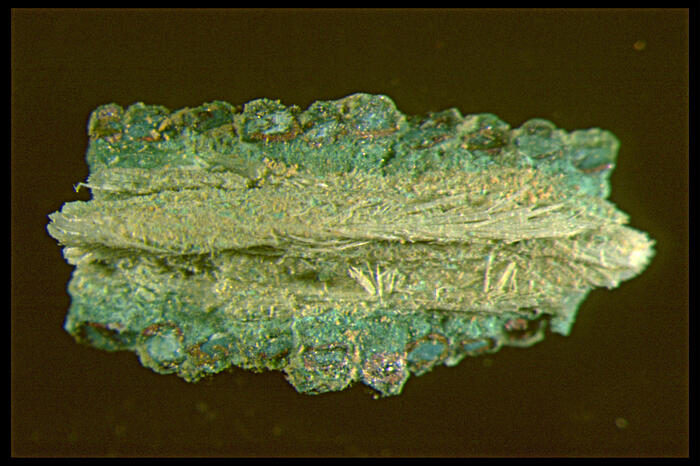Above: Fiber pseudomorphs preserved by copper salts on the interior of the coiled copper necklace that have been analyzed and determined to be silk from the wild silk moth, Antheraea mylitta, commonly called "Tussar" silk today.
A brief overview of the major cultural traditions of the Indus region is presented along with a discussion of the current state of research on the most ancient textiles used by ancient peoples of this region. The most common fibres used in the Indus Valley appear to have been cotton, but various types of wool and possibly jute or hemp fibres were also used. Most recently, the discovery of silk thread inside copper beads from the site of Harappa indicates that wild silk was also known to the ancient inhabitants of the region, though there is no evidence to suggest that it was woven into fabric. In the following article a brief overview of the major cultural traditions of the Indus region will be presented along with a discussion of the current state of research on the most ancient textiles used by ancient peoples of this region.

